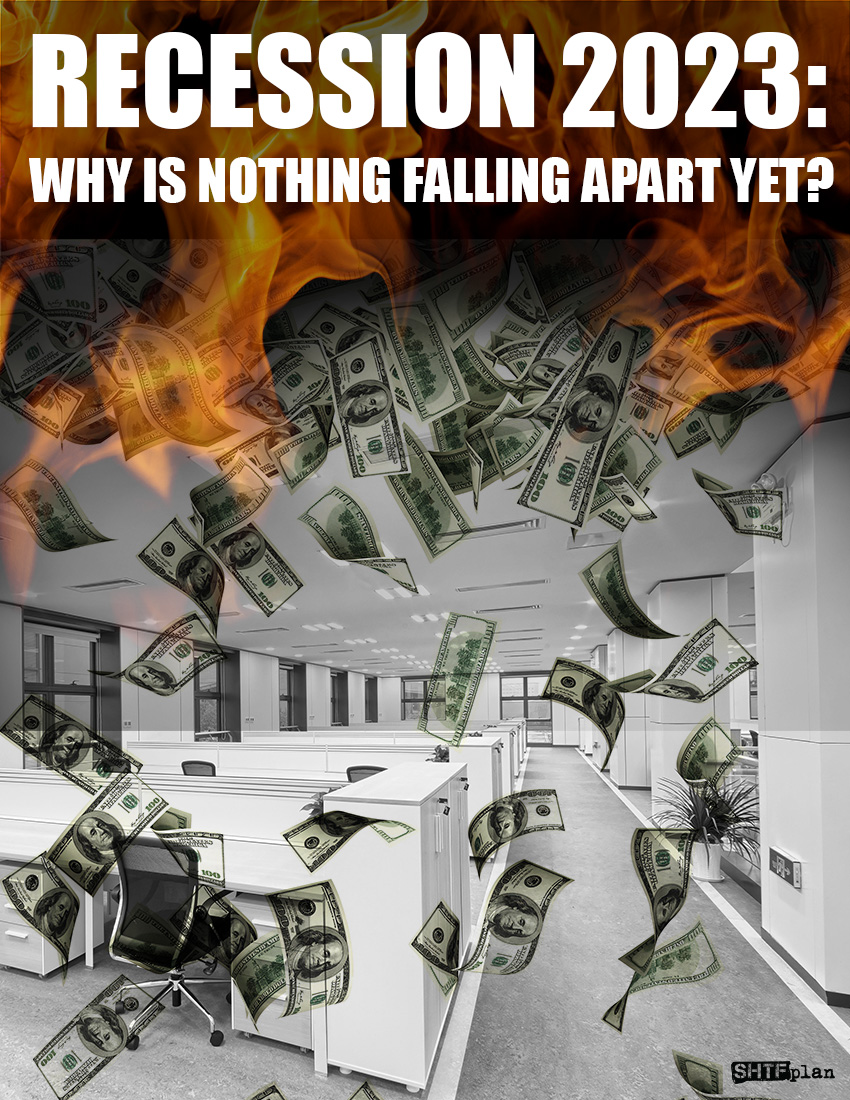
TRUMP SAYS: HUNTER MAKES FORTUNE FROM SHADY DEALS!
BIDEN FAMILY STINKS TO HIGH HEAVENS OF CORRUPTION!
DON'T GET LEFT OUT: HUNTER MUST BE STOPPED!

This article was originally published by John Staddon at The Mises Institute.

The July/August 2021 Cato Policy Report hosted a friendly debate between Cass Sunstein and Mario Rizzo. Sunstein is a Harvard Law professor, a onetime member of the Obama administration, and coauthor of Nudge and other books advocating public policy applications of behavioral economics. Rizzo is an economist at New York University.
Sunstein argues that modifying the “choice architecture” available to consumers so as to “nudge” them toward the correct choice is a libertarian position perfectly compatible with Friedrich Hayek’s The Constitution of Liberty. Rizzo disagreed, arguing that behavioral economics does not solve Hayek’s knowledge problem, quoting psychologist Jerome Kagan’s 2012 book: “Few psychological concepts intended to represent a person’s tendency to react in a certain way apply across diverse settings.” In other words, we do not know enough psychology to know how people will react in every choice situation. Kagan did not write about behavioral economics, but, as we will see, his reservation applies there with special force.
The “knowledge problem” manifests itself in many places in this short debate; I will mention just one: Sunstein’s frequent use of the undefined term “epistemically favorable conditions,” which seems to mean conditions under which people will act “rationally”—which of course presupposes the kind of knowledge that Kagan and Hayek dispute. We cannot in general know what epistemically favorable conditions are. Much more could be said along these lines, but here I simply want to point out a couple of serious flaws in behavioral economics.
The seminal paper in behavioral economics is the 1979 paper by Daniel Kahneman and Amos Tversky called “Prospect Theory: An Analysis of Decision under Risk.” This work eventually led to many thousands of citations and an economics Nobel Prize in 2002. Kahneman and Tversky consulted their own intuitions and came up with simple problems which they then asked individual subjects to solve. The results generally confirmed their intuitions.
Here is a typical problem. Subjects were asked to pick one of two choices. In one case, the choices were A, 4,000 (Israeli currency) with probability 0.2, or, B, 3,000 with probability 0.25. Sixty-five percent of the subjects picked A, with an expected gain1 of 800 over B, chosen by 35 percent, with an expected gain of 750. This represents rational choice on the part of 65 percent of choosers.
The authors contrast this result with an apparently similar problem, A, 4,000, p = 0.8, versus B, 3,000, p = 1.0. In this case, 80 percent of subjects chose B, the certain option with the lower expected value (3,000 versus 3,200), an irrational choice. Kahneman and Tversky then used this contrast, and the results of many similar problems, to come up with an alternative to standard utility theory. Prospect theory, as they called it, is not like most scientific theories, namely a modest set of assumptions from which many predictions can be deduced. It is rather a list of effects—such as the certainty effect (this case), loss aversion, confirmation bias, and the like (Wikipedia lists more than a hundred “biases” like this). Prospect theory attempted, with only partial success, to account for these discrepancies by proposing a modified utility function (a more complex version appears in a later paper), but basically, it is a set of labels, rather than a theory.
There two problems with this superficially attractive approach: teleology and the object of inquiry. First, as to teleology, the use of utility functions: Ludwig von Mises argued that “teleology presupposes causality,” and teleological accounts often fail, because they are either silent on the causal processes which, under some conditions, allow people to maximize utility or, more commonly, because they assume that the mathematical method for obtaining the maximum, equating marginals, is in fact the one that people use. Kahneman and Tversky did not (and we still do not) know the processes by which people arrive at their decisions. Hence the failure of their teleological models and the reduction of “prospect theory” to a set of labels.
The more serious problem, hinted at by Rizzo’s Kagan quote, is prospect theory—any theory that attempts to account for the majority choice—cannot apply to the minority choice. Neither the 35 percent who chose rationally in the first case nor the 20 percent who chose irrationally in the second. If the object of inquiry is the psychology of individual human beings, the work is incomplete. To finish the job, the experimenters need to find out what it takes to produce the same result for all subjects.
Kahneman and Tversky’s results, and the theory that describes them, are property of groups of people under very restricted conditions. They are not, as is sometimes assumed, general properties of human nature. The method is just opinion polling, albeit with a clever set of questions. Yet each effect is presented as an invariant property of human choice behavior. Because the group effect is reliable, individual exceptions are ignored. There is little doubt, for example, that subjects given a lesson or two in probability, or faced with a question phrased slightly differently (e.g., not “What is your choice?” but “What would a statistician choose?”), would choose differently. As Rizzo hints at one point, under some conditions, a group might even choose differently than an individual. For example, suppose the subjects were allowed to consult among themselves before choosing. If the choice were between, say, 1,000 for sure versus a 0.6 chance of 2,000, would it not be wise for the group of, say, twenty subjects to agree among themselves to always choose the 0.6 and 2,000 option and then split the proceeds evenly—thus ensuring that everyone would probably get more than $1000?
People’s choice in a problem like this almost certainly depends on the absolute quantities involved. Who can doubt that if subjects were offered a credible choice between, say $10 million for sure versus a 0.6 chance of $20 million, close to 100 percent would choose the sure thing? Until the theory is developed to account for the minority choice and the effect of absolute amount, until it is in a form that allows no individual exceptions, it cannot pretend to be an adequate model of human choice behavior. Hence, quite apart from all the other objections to “nudge” policy is the fact that to the extent that it relies on behavioral economics, it relies upon a fallacy.

It Took 22 Years to Get to This Point
The United States just made a decision that could lead to World War 3. The current ruling class...
Norway, Sweden, and Finland are reportedly urging citizens to stock up on essentials to get...
Russia is once again warning the United States and its Western allies that Moscow will view the...
Commenting Policy:
Some comments on this web site are automatically moderated through our Spam protection systems. Please be patient if your comment isn’t immediately available. We’re not trying to censor you, the system just wants to make sure you’re not a robot posting random spam.
This website thrives because of its community. While we support lively debates and understand that people get excited, frustrated or angry at times, we ask that the conversation remain civil. Racism, to include any religious affiliation, will not be tolerated on this site, including the disparagement of people in the comments section.


Choices are decisions and decisions have consequences.
You should think carefully before letting someone push you into making one the way they want you to instead of making it yourself.
After all, you’re the one that will bear the consequences, be they good or bad, not them.
Just think for yourself instead of letting others think for you, that’s the only way you’ll be in control of your own life.
Holy Word Salad, Batman! This gave me a flashback to my more naive days when I read The Economist regularly.
Cass Sunstein (D) & many RINOs (R) are AINOs (Americans in Name Only). These elites do NOT embrace founding principles of individual rights & determination. These elites believe American CITIZENS are serfs to be guided down one hole or another dreamed up by fellow elites. Their study of mass psychology should include B.F. Skinner. In one study Skinner slowly added additional rats to a confined space (a cage). Eventually one additional rat caused the entire population to go berzerk. Kind of like the behavior we see in our Demonrat-run big cities. Sunstein & his ilk might reflect what the consequences might be.
But there is a difference between “Nudged” and to be FORCED or lose their livelyhood and freedom.
Tell us what happens to a group who are Forced to take something where they know it will eventually kill or permanently disable them. What do you think that outcome will be in a debate?
When people are “forced” as some politicians suggest with the “vaccines”, we go to an entirely more volatile situation. I compare it to a PHASE CHANGE of liquid water to gas within a confined space. The enormous resulting pressure can be catastrophic, like the French Revolution (off with their heads) and many other societal reactions to tyranny. When the pendulum swings too far in one direction, beware of the return swing.
All these guys belong to a certain tribe.
Just like Bernays and Freud (same tribe), they love talking about and manipulating public perceptions. Economists are sidekicks of the (((moneychangers))) and they’ve been fooling the people for thousands of years.
Hmmmm…I thought I had all the trigger words taken out.
Must be the triple parentheses wut throwed it in ta moderation purgatory.
If you’re not rubbing, you’re not racing.